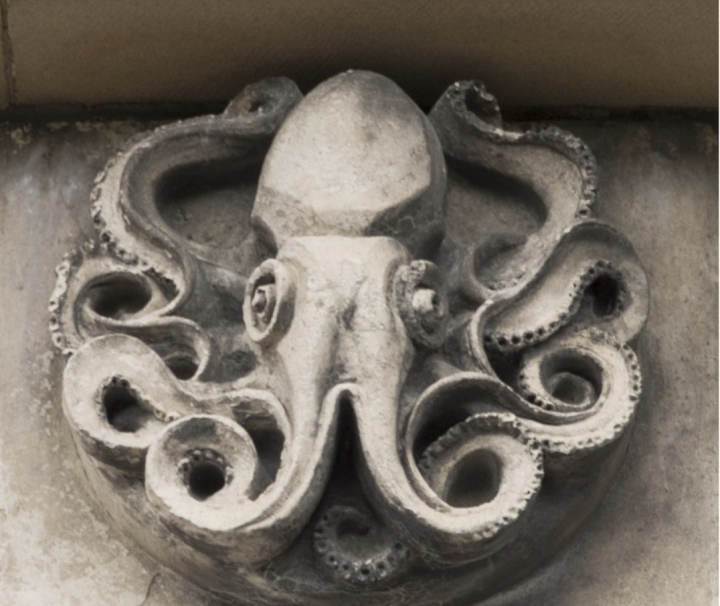On the trail of Public Art
Discover our collection of Public Art all around the University.

A fascinating collection of works of art is on public view in various outdoor locations across our campuses.
The most famous is probably the Golden Boy, which sits on top of Old College dome. Modelled on local boxer Anthony Hall, the recently re-gilded six-foot bronze sculpture of a naked youth holding the torch of knowledge was created by John Hutchison in 1888 and is an icon of the University and the city.
Everyone loves the animal roundels on the former Zoology Department (now the Ashworth Laboratories housing the School of Biological Sciences) at King’s Buildings. Created by Phyllis Bone in the 1920s, each one depicts invertebrates and animals representing the principal zoo-geographical regions of the earth. You can spot everything from an aardvark and an armadillo to a tiger, a lion and a dung beetle.
Viewed from one side, the Sprinting Afghan Hound by Matthew Lane Sanderson at the Small Animal Hospital at the Royal (Dick) School of Veterinary Studies has flowing hair but, viewed from the other side, displays the dog’s skeleton. The dog has recently been joined by a horse, created by Kelpies’ sculptor Andy Scott and located outside the stunning new Charnock Bradley building at Easter Bush.
Elsewhere, across the institution, from Pollock Halls to the Main Library and from George Square Gardens to the McEwan Hall, you can find a huge range of work in differing styles.
One of the most poignant is the huge and imposing War Memorial by Pilkington-Jackson on the west wall of the quadrangle of Old College. It commemorates over one thousand staff, students and alumni who fought in the two world wars. The original memorial was unveiled in 1923, with an extension added in 1952. It includes a quote from Rudyard Kipling, taken from a speech he gave when he visited the University in 1920:
they turned without fear or question from these gates of learning to those of the grave in order that men might continue to learn freedom.
One of the most interesting recent challenges for our artists and curators has been the acquisition of 768 mosaic fragments from the arches at Tottenham Court Road tube station, which were designed in the 1980s by Eduardo Paolozzi. The artist was born in Leith and studied at Edinburgh College of Art.
The mosaics were removed from the station in 2015 as part of its redevelopment and the fragments – some 33% of the original artwork - gifted to the University by Transport for London. Deciding how and where to display them is proving quite a puzzle.
Podcasts available
The Public Art collection is part of a rich array of collections owned by the University, with everything from historic musical instruments at St Cecilia’s Hall to rare books and manuscripts, paintings, textiles, casts and the archives of various organisations.
Find out more
To find out more, or visit the Collections, museums or galleries, go to https://collections.ed.ac.uk/

